Table of Contents
Although I’m fortunate to test an abundance of products every year, I’ve seldom changed my bag setup. Identifying the optimal 14 clubs for your bag is a journey, and once you find a build that works, I suggest sticking with it. In this post, I address the different types of golf clubs and provide tips on how to best build your bag.
I’ll address every club option available and explain which golf clubs are better suited to low, mid, and high handicappers. Before wrapping up, I’ve created a guide to help you identify the best 14 clubs to get from the tee to the green.
⛳️ Read Next: 13 Best Unknown Types of Golf Club Brands of 2023

What does an ideal set look like for different golfers?
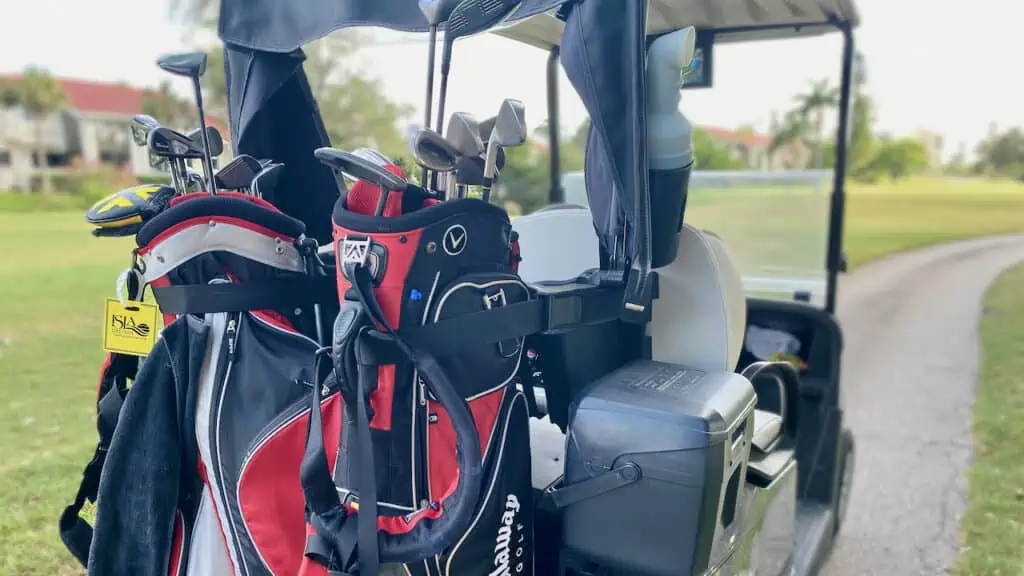
Here is a breakdown of how I built my bag as I progressed from a beginner to a low handicap golfer.
| Golf Club Names | High Handicapper | Mid Handicapper | Low Handicapper |
|---|---|---|---|
| Driver | 1 | 1 | 1 |
| Fairway Woods | 2 | 2 | 2 |
| Hybrids | 2 | 2 | 0 |
| Irons | 4 | 5 | 6 |
| Wedges | 2 | 3 | 4 |
| Putter | 1 | 1 | 1 |
| Total Club Count | 12 | 14 | 14 |
How many different clubs are there in golf?
Golf clubs are categorized into 5 predominant groups. Metal woods are the longest-hitting clubs, followed by hybrids, irons, wedges, and the putter. In the sections below, I dissect the specific club’s functions, benefits, and suitability for all amateur golfers.
Golf Club Names & Uses
Driver

Every golfer should have a driver to help you maximize distance from the tee box. The driver is the longest club in the bag, both with the length it generates and the length of the shaft. Modern drivers are typically crafted in a 9, 10.5, or 12°.
Personally, I keep my driver use to a minimum, but I carry it to boost my yardage off the tee on long par 4s and par 5 holes. As a moderate swing speed golfer, I find the medium to high launch of a 10.5° driver ideal for my game. However, senior golfers with slower swing speeds may prefer the effortless lift-off of a 12° driver.
Faster swinging low handicappers and professional golfers are best equipped to handle a 9° driver that launches slightly lower.
Besides the loft, think about the offset of the driver. Higher handicappers prone to slicing shots are better off with a draw-bias design that minimizes slices. Conversely, lower handicappers may prefer less offset to encourage neutral ball flight.
Fairway Woods
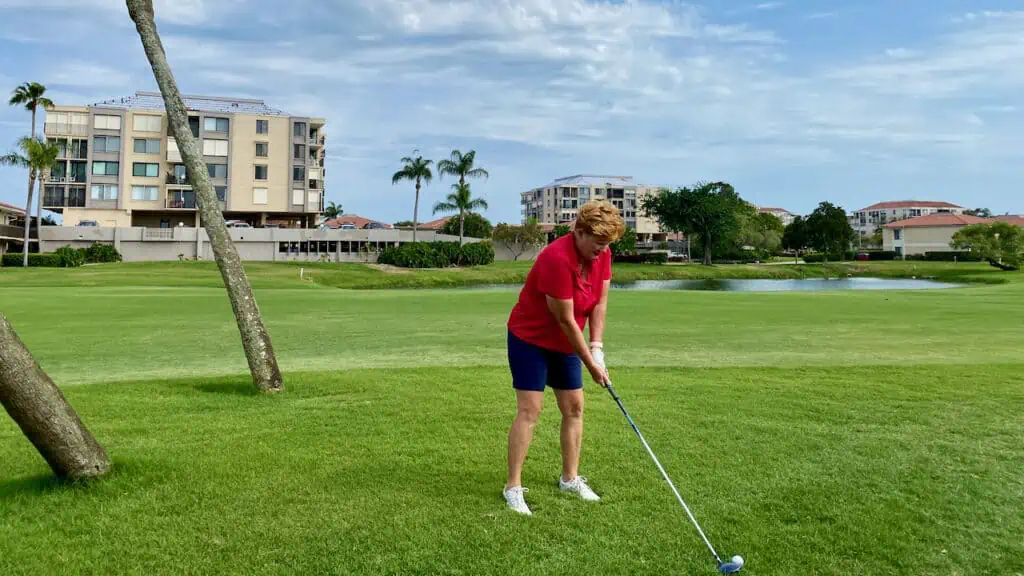
A 3 and 5 wood are the common fairway woods found in a golf bag. The longest fairway wood is a 3 wood, carrying 13 to 16° of loft. The stronger loft makes it a suitable alternative to a driver off the tee box.
I recommend adopting the same approach to fairway woods as you did with the driver loft. Higher swing speeds may prefer the stronger, lower launch of a 13° 3 wood, whereas a weaker 16° 3 wood suits moderate and slow swing speed amateurs.
Although manufacturers craft 4 woods, these are not as common as a 5 wood, which typically carries 18° of loft. A 3 and 5 wood is often sufficient for most mid and high-handicap golfers, as it leaves you with slots in the bag to add easier launching hybrids. If you struggle for consistency with a 5 wood, I suggest leaving it out for a 7 wood.
I have played a 7 wood for 2 decades thanks to its elevated launch and soft landing on longer approach shots. The 7 wood has made a comeback recently, with Rod Pampling, Matt Fitzpatrick, and Cam Smith giving them a whack on occasion, but I find they suit slow swing speeds.
I know some senior golfers who operate a 9 and 11 wood, but these are less commonly found and not worth addressing.
Golf Hybrids
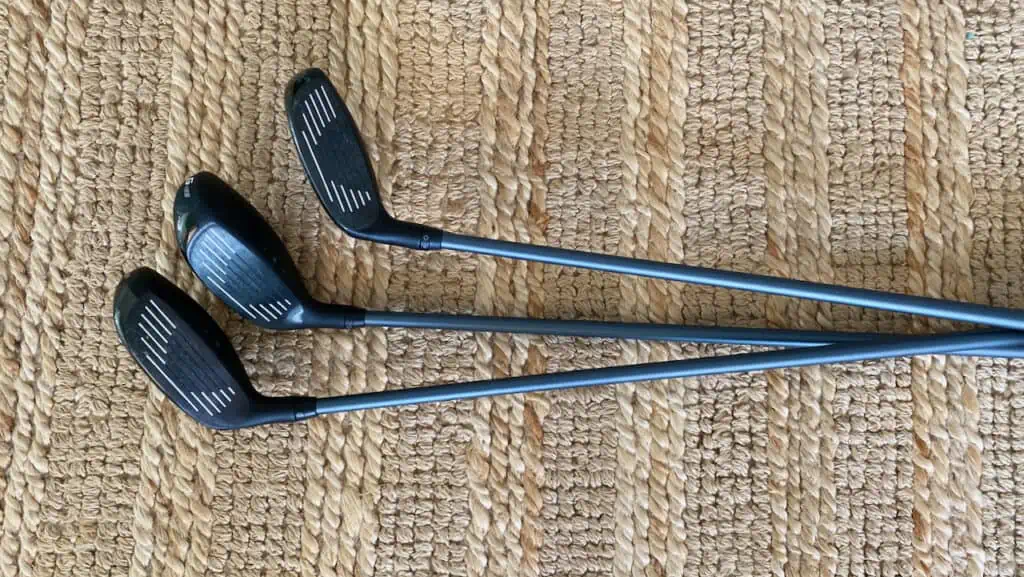
In my youth, hybrids were seen as clubs for higher handicappers, owing to their slice combatting offset and oversized heads. That narrative has changed, and you now see professionals swinging neutral flight-bias hybrids.
On average, I find amateurs carry 2 hybrids often to replace long irons, which are more challenging for mid and high-handicappers to launch. A 2 hybrid is the lowest lofted construction set at 16 to 17 degrees, followed by an 18° 3 hybrid. This means a 2 hybrid is equivalent to a weak 3 wood, while a 3 hybrid is equivalent to a 5 wood.
A 4 hybrid is next in line at 21°, akin to a 7 wood or modern 5 iron. The remaining two common hybrids are a 5 and 6, carrying 24 and 27° of loft, respectively. If you utilize a 3 and 5 wood, there’s no need to consider a 2 or 3 hybrid due to the loft similarity.
Instead, I recommend looking at a 4 and 5 hybrid to swap out for your 5 and 6 iron, purely for their forgiveness, accuracy, and easy launch. However, if you’re like me, you may opt for no hybrids and prefer long irons for their lower launch and control.
Utility Irons
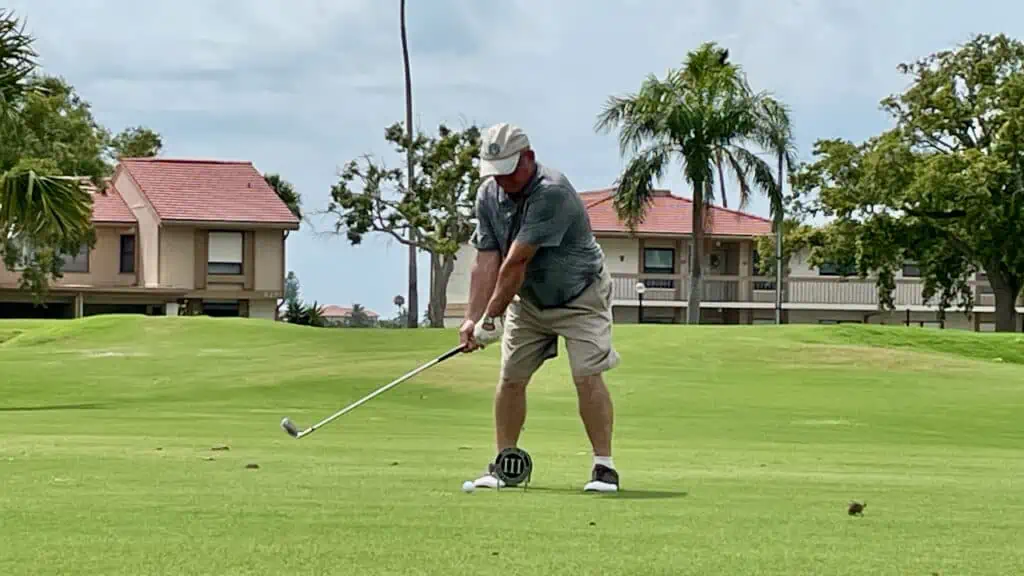
Utility irons are more commonly employed by lower handicappers as a low-launching, workable alternative off the tee. I find that golfers only tend to carry one utility iron in their bag, if at all. Utility clubs look like an iron from the front but contain perimeter weighting to increase the moment of inertia (MOI), stability, and forgiveness.
Golf clubs in this category are generally limited to 2, 3, and 4 utility irons, with 18, 21, and 24° of loft, respectively. I started using a 2 driving iron while living in the ever-windy city of Cape Town, where my home course was a semi-links design.
The low launch and powerful roll of each strike suited the wind-swept, dried rough and fairways at my home course. Players like Rory McIlroy and Justin Thomas have the same idea when they take on the Open Championship, and the Srixon ZX Utility iron is a consistent fixture in Darren Clarke’s bag.
Irons | Long Irons, Mid Irons, & Short Irons

Golf Irons are sold in sets or individually, with the former being the most convenient and affordable option. Most golf sets start with a 4 or 5 iron and run to a pitching or gap wedge. If you prefer hybrids to long irons, I suggest sourcing a golf set starting with your mid irons, like a 6 or 7 iron.
This prevents you from overlapping the lofts, leaving you with additional space to hold more wedges at the lower end of your bag. A high handicapper should thrive with a 6 to sand wedge set of game-improvement cavity back clubs. I find these irons are easy to launch, forgiving, and offset to promote straighter shots.
I have found that mid handicappers can handle a set with a 5 iron through to a pitching or gap wedge. Lastly, low handicappers and professionals may prefer the lower launch, workability, and control of longer irons, making a 4 iron to pitching wedge suit an ideal match.
I suggest that mid and high handicappers stick to forgiving game improvement irons. However, skilled players may demand the feel and workability of muscle backs or blades, especially in the short irons.
Golf Wedges
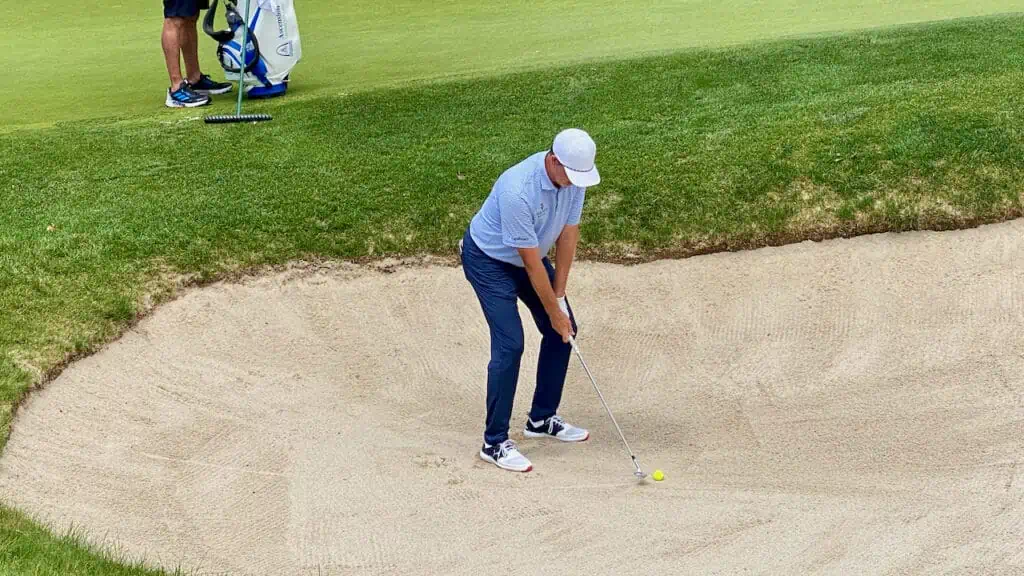
I place heavy emphasis on my wedges as it is the best part of my game, where I gain the most strokes. I desire versatile options on short greens, where I can open my clubface for flop shots, close it for bump and runs, and keep it square for full pitch shots.
I carry a pitching, gap, sand, and lob wedge to cover me on every strike. Low handicappers may employ a similar setup, given the importance of chips, flops, bunker, and pitch shots. However, I find mid-handicap golfers perform with a pitching, gap, and sand wedge.
Finally, high handicappers should stick to the basics and employ a pitching and sand wedge. At this stage, you are not ready to handle severely lofted clubs like a lob wedge.
Putters
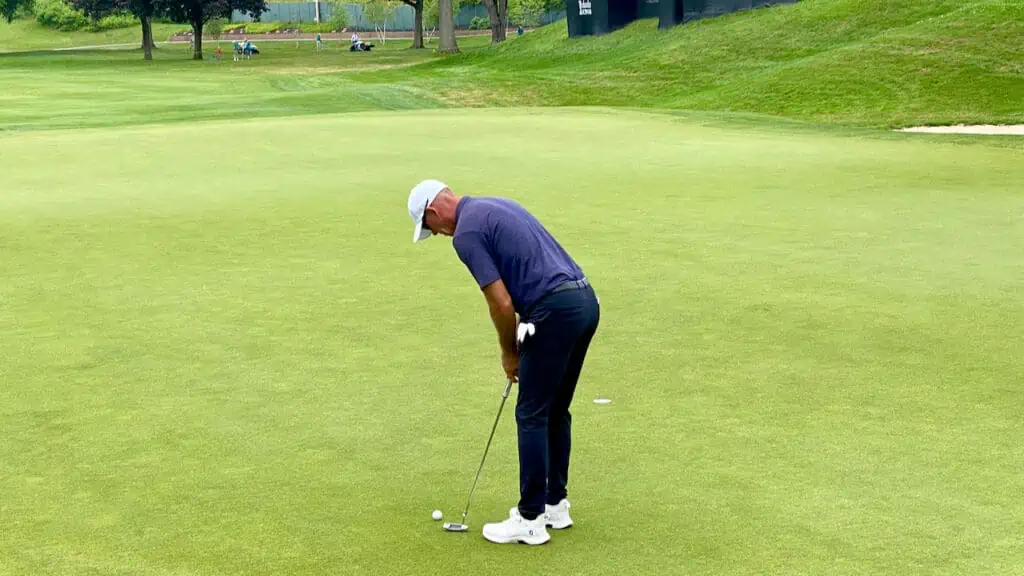
The final item in your bag is a putter. At a top level, putters are split into blades and mallets, with the latter offering superior forgiveness. Mallet putters are oversized and equipped with elevated moment of inertia (MOI) to stabilize the face at impact for a clean, consistent roll.
Besides the size of the putter head, the hosel is a significant factor as it dictates the level of toe hang that the putter head has. Putters with increased toe hang are better suited to golfers with extremely arched strokes, and a face-balanced putter works for slightly arched strokes.
Putter hosels are categorized as double bend, center shaft, plumber neck, and short hosel. Golf manufacturers suggest that a double bend and center shaft putter suit straight back and through strokes. However, Michael S. Kim heavily disagrees with this opinion. In the interest of keeping Michael happy, we will say the above hosels suit slightly arched strokes.
I operate with a straight-arched combination and find a plumber hosel better suited to my stroke. Finally, the short hosel creates ample toe hang to support a heavily arched putting stroke.

Guide to Picking the Types of Golf Clubs Best for You
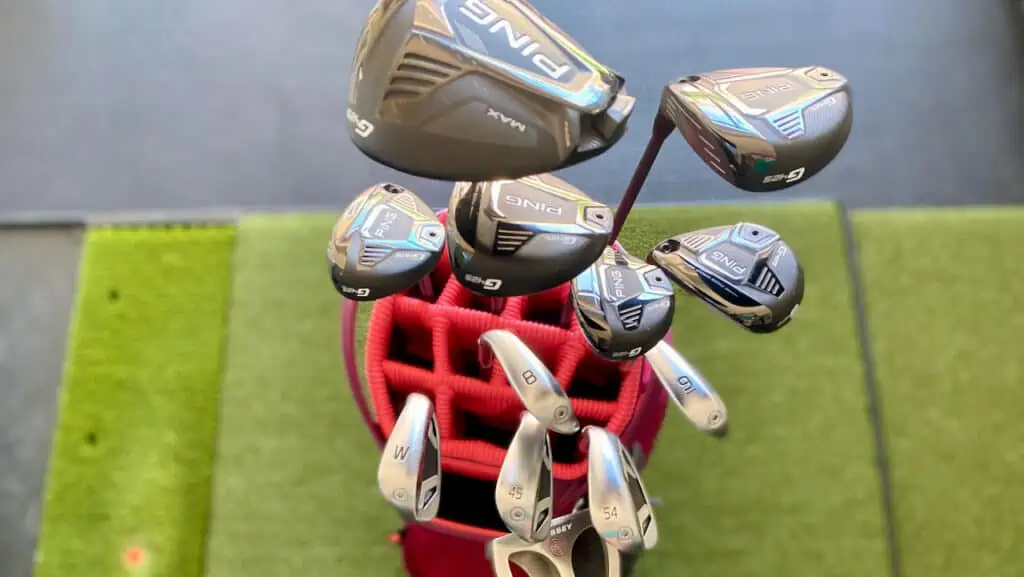
New vs Second Hand Golf Clubs
Acquiring 14 brand-new clubs requires a sizable budget. Second hand golf clubs are an alternative option for discount seekers, with a raft of options available on Amazon and Global Golf.
The downside of second hand clubs is that you never know how the previous owner looked after them. It is also challenging to find the optimal golf club components and specs for your swing. You get what the retailer has, so beggars can’t be choosers.
Despite the higher cost of new golf clubs, you have an array of golf club lofts, shafts, and head designs to choose from. If you are a serious mid or low handicapper, it is best to consider a new set to find the optimal tools for your game. Conversely, a used golf set works for a weekend warrior who occasionally hits the links.
Packaged Set vs Build Your Own Bag
Golf clubs are sold in packaged sets or as a la carte options where you individually select metal woods, hybrids, irons, wedges, and the putter. I used a hybrid model for my last set, individually selecting my woods, wedges, and putter but opting for an iron set featuring a 4 iron to pitching wedge.
Golf club sets are ideal for beginners and high handicappers thanks to their affordability, forgiveness, and set composition. I find it is the cheapest approach to securing golf clubs, but they only include 9 to 12 golf clubs. The reduced club count is ill-suited to superior golfers but works for a high handicapper.
Mid and low-handicappers may opt for the same hybrid approach I did. The metal woods, hybrids, wedges, and putter are sourced individually, but they opt for an iron set. A set of irons offers the consistency, progressive offset, and loft needed for control on approach.
⛳️ Read Next: Golf Club Building 101: How to Do It Yourself
Hybrids vs Long Irons
I find most amateur golfers in my circle prefer golf hybrids over long irons for their forgiveness, accuracy, and easy launch. The sole on hybrids also glides swiftly through the turf and encourages clean contact from tight lies and the cabbage patch.
I take a different stand on the matter as I prefer the lower launch, control, feel, and feedback provided by long irons. I have also played long irons for over 29 years and am simply more comfortable with them.
If your budget allows, I would suggest looking at the option of hybrids and long irons to cover yourself in all conditions. The hybrid clubs suit clear days and courses that demand a soft landing on approach.
Conversely, the lower launch and flight of the irons are handy for windy rounds and dry golf courses where you can benefit from the added roll after landing.
Gapping
Gapping is a concept foreign to many amateurs, but it has a greater impact on your bag setup than you realize. Gapping describes the distances between your clubs.
For example, I hit a 5 iron 185 yards and a 6 iron 175 yards, leaving a 10-yard gap between the two. This is a comfortable gap because if I have a shot 180 yards out, I will hit a softer 5 iron, ensuring my golf ball makes it to the target. This means I can plug those gaps and avoid any challenges.
Gapping gets interesting when a player finds that they hit 2 clubs the same distance. My brother hits a 5 iron 159 yards, and his 6 iron goes 161 yards. Given the similarity in length, he decided to drop the 5 iron from his bag as it was wasting space. This freed up a slot in his bag, which he wisely replaced with a gap wedge.
If you hit two clubs the same distance, drop the stronger lofted club and use the space in your bag for other clubs. Avoid carrying the standard sequence of golf clubs just because everyone else does.
Forgiveness
Consider the level of forgiveness you demand from your golf clubs to guide your decision. I recommend oversized metal woods containing a low center of gravity (CG) set in a draw bias to encourage straighter shots if you are a high handicapper prone to inconsistent strikes.
Mid and high handicappers should also consider the clean turf interaction, effortless launch, and accuracy of hybrids instead of long irons. I also suggest sticking to cavity back game improvement irons that feature a wider sweet spot and generate an elevated launch on approach.
Low handicappers may desire low-spinning woods that preserve ball speed and boost launch and distance. Skilled players are often attracted to forged players’ irons, which deliver less forgiveness, superior workability, and a soft feel.
Putting Stroke
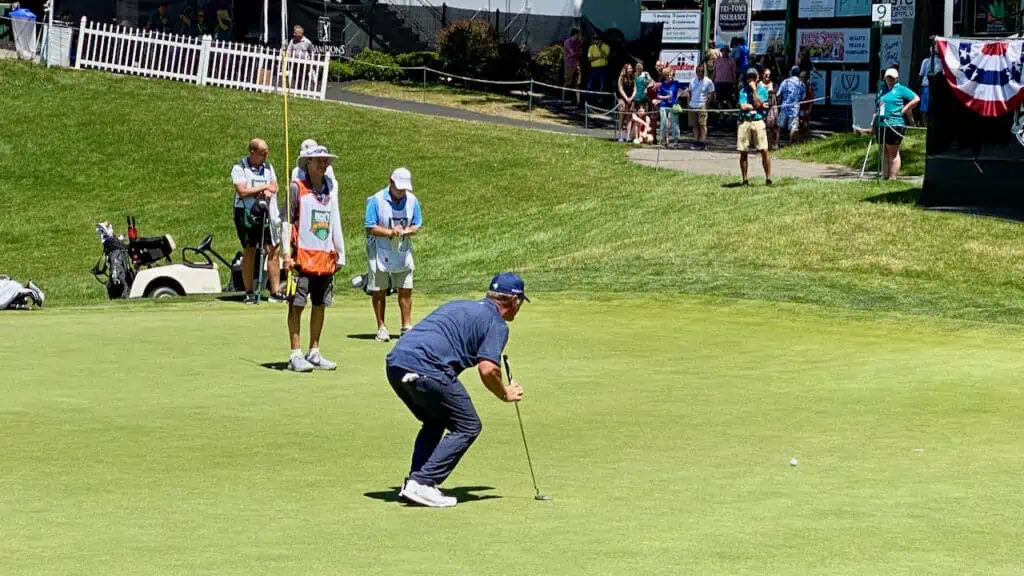
When testing flat sticks, think about your putting stroke and which hosel best assists you through impact. A plumber hosel putter creates an element of toe hang and excels for players with a straight-arched stroke combination.
The double-bend and center shaft designs suit players with minimal arch in their stroke, while a short hosel works for extremely arched strokes.
How do I know what golf clubs I need?
You know what golf clubs you need based on your skill level. A beginner suits a packaged set featuring 9 to 12 golf clubs that offer forgiveness and consistency from tee to green. Conversely, mid and low-handicappers will select their metal woods, hybrids, wedges, and putter a la carte while settling for a set of irons.
Mid-handicap golfers suit forgiving game improvement clubs. The ideal setup for a mid handicapper will include:
- Driver
- 2 Fairway woods
- 2 Hybrids
- 5 Golf irons (5 iron to 9 iron)
- 3 Golf wedges (Pitching wedge, gap wedge, and sand wedge)
- Putter
The golf bag setup of low handicappers might include:
- Driver
- 2 Fairway woods
- Utility iron or hybrid or 4 iron
- 5 Golf irons (5 iron to 9 iron)
- 3 Golf wedges (Pitching wedge, gap wedge, and sand wedge)
- Putter
If the player does not carry a hybrid or utility iron, they will place a 4 iron in the bag. Finally, skilled golfers often operate a gap, sand, and lob wedge.
The final club in the bag is the putter, which is determined by putting stroke and strike consistency over skill level.
Final Thoughts on Types of Golf Clubs
The types of golf clubs you should carry boil down to your skill level, swing speed, launch preference, and putting stroke. There is no one-size-fits-all approach to building your bag, so I recommend you stick with forgiving, easy-launching golf clubs like oversized metal woods, hybrids, and game improvement irons.
Although low handicappers might excel with low-spinning smaller wood heads, the average golfer will struggle to launch them consistently. The soft-feeling, workable players’ irons that superior golfers utilize are unforgiving and ill-suited to the mid and high-handicap golfers.
I find the best approach to identifying the optimal bag setup is to go for a golf club fitting. The guidance of experts helps you better understand your game, which leads to better-informed club decisions.

